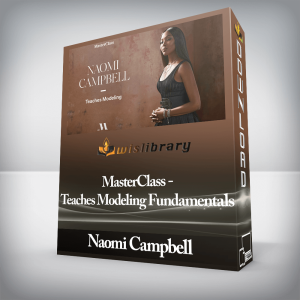Full DayThe content of this course will help clinicians with clinical decision-making to take your practice to an advanced level. Discussion topics are based on research that Dr. Gross has synthesized over the past 30 years of practice, research and teaching. You will leave able to determine the scientific basis to change practice patterns immediately as you return to patient care.Purchase Evidence-Based Interventions for Osteoarthritis, Meniscal/Labral Lesions, Muscle/Tendon Strains, & Tendinitis – Michael T. Gross courses at here with PRICE $199.99 $85Protect articular cartilage from further damage, keep the original equipment & avoid total joint replacementComprehensive strategies to make sure repairs of meniscal and labral tears are successfulSuperior techniques for treating first-time muscle strains so they don’t recurEffective protocols for patients who have had many muscle strain recurrencesHow to protect tendon pulley mechanisms from tensile stress, compressive stress & frictional abrasionThe content of this course will help clinicians with clinical decision-making to take your practice to an advanced level. Discussion topics are based on research that Dr. Gross has synthesized over the past 30 years of practice, research and teaching. You will leave able to determine the scientific basis to change practice patterns immediately as you return to patient care.If you could confidently answer the questions below, imagine how it could impact your practice…What hand should be used for cane use if a patient has knee varus versus knee valgus?What are the appropriate clinical interventions for tendinopathies in instances where tendons wrap around tendon pulley mechanisms?What happens when excessive pressures are transmitted across epiphyseal plates?How do we help young patients prevent avulsion fractures of apophyses?How do we help our patients prevent muscle strain recurrences?What are the best detection methods for labral lesions at the hip or glenohumeral joints?What are the best detection methods for meniscus lesions at the knee?What are evidenced-based guidelines for interventions of knee meniscus lesions, as well as labral lesions of the hip or shoulder?OUTLINEOSTEOARTHRITISComposition of articular cartilageMechanical properties of articular cartilageThe 3 main destroyers of articular cartilageExercise parameters that protect articular cartilage from frictional abrasionProtecting your patient from impact loadingStrategies to alter contact pressuresConservative and invasive repair attempts and how to manage themThe interplay between running shoes and foot strike patternSo, you thought you knew what hand to use with a cane for knee varus/valgus?MENISCAL/LABRAL LESIONSChanging your thinking about post-scope meniscectomyImproving meniscus repair responseDetecting SLAP lesions – what will be the patient’s story?Detecting SLAP lesions – the best special testsBasics of SLAP lesion rehab based on lesion type/repair of the lesionDetecting hip labral lesionsRehabilitation of hip labral lesionsJoint instability models and effect on meniscusImproving the repair responseMeniscus transplantationMUSCLE/TENDON STRAINSWhy the weekend warrior is prone to muscle-tendon juncture injuries – at the microscopic levelThe Jarvinen Approach to treating muscle strain injuriesFactors that explain why patients haverecurrent muscle strains – how to end the vicious cycleDealing with compartment injuriesApophyseal injuries in the youngAvulsion injuries among older adultsTENDINITISTendon structure in healthy tendon and in tendon with chronic tendinosisTreating acute tendinitis versus chronic tendinosisTendon pulley mechanisms – the triple whammyStrategies to decrease compressive stress in tendon pulley mechanismsStrategies to decrease frictional abrasion in tendon pulley mechanismsApplication of tendon pulley mechanisms to the shoulder, wrist, and ankleThe “Wringing Out Effect” of Rathbun and McNab and its applicationsOBJECTIVESPlan strategies for protecting articular cartilage from further damage, keeping the original equipment, and avoiding total joint replacement.Analyze comprehensive strategies that ensure repairs of meniscal and labral tears are successful.Implement superior techniques for treating first-time muscle strains so they don’t recur.Evaluate treatment protocols for patients who already have had many muscle strain recurrences so that they have no additional recurrences.Select interventions to protect tendon pulley mechanisms from tensile stress, compressive stress, and frictional abrasion.Implement effective strategies for rehabilitating chronic tendinosis and acute tendinitis.ADA NeedsWe would be happy to accommodate your ADA needs; please call our Customer Service Department for more information at 1-800-844-8260.Satisfaction GuaranteeYour satisfaction is our goal and our guarantee. Concerns should be addressed to: PO Box 1000, Eau Claire, WI 54702-1000 or call 1-800-844-8260.Tag: Evidence-Based Interventions for Osteoarthritis, Meniscal/Labral Lesions, Muscle/Tendon Strains, & Tendinitis – Michael T. Gross Review. Evidence-Based Interventions for Osteoarthritis, Meniscal/Labral Lesions, Muscle/Tendon Strains, & Tendinitis – Michael T. Gross download. Evidence-Based Interventions for Osteoarthritis, Meniscal/Labral Lesions, Muscle/Tendon Strains, & Tendinitis – Michael T. Gross discount. Purchase Evidence-Based Interventions for Osteoarthritis, Meniscal/Labral Lesions, Muscle/Tendon Strains, & Tendinitis – Michael T. Gross courses at here with PRICE $199.99 $85

 Complex Mood Disorders: Practical Strategies and Tools for Bipolar, Depression and Insomnia – Chris Aiken
₹14,110.00
Complex Mood Disorders: Practical Strategies and Tools for Bipolar, Depression and Insomnia – Chris Aiken
₹14,110.00
 Demystifying Lab Values from Head to Toe with Cyndi Zarbano – Cyndi Zarbano
₹14,110.00
Demystifying Lab Values from Head to Toe with Cyndi Zarbano – Cyndi Zarbano
₹14,110.00
Evidence-Based Interventions for Osteoarthritis, Meniscal/Labral Lesions, Muscle/Tendon Strains, & Tendinitis – Michael T. Gross
₹14,110.00



